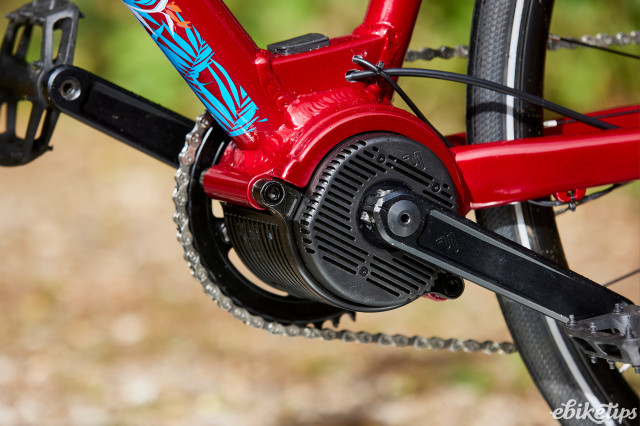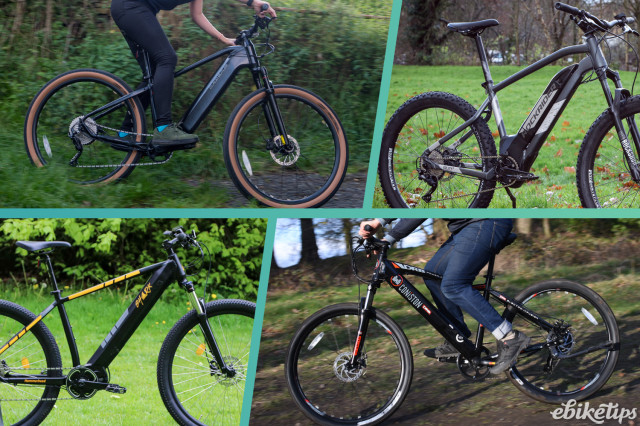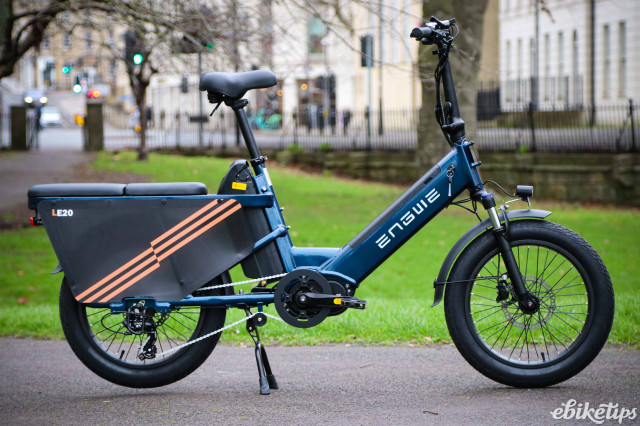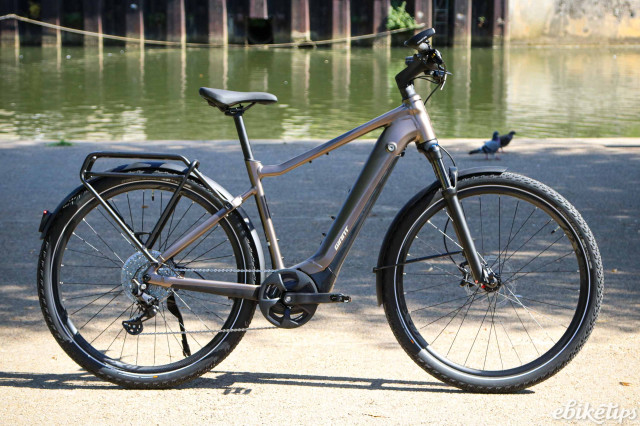- This article includes paid promotion on behalf of Freeflow Technologies
- Read more about sponsored content
Not long after Mavic unveiled their new lightweight X-Tend motor it’s time to look at another one. Freeflow Technologies are based in East Kilbride up in Scotland, and they’ve recently launched a SEEDRS funding round to raise capital to continue to develop their mid drive motor.
This isn’t money to bring it to market though: the Freeflow motor - which has been in development for 11 years - is in production, assembled up in Scotland, and the company is working with a range of bike companies to incorporate it into bikes. We got the chance to ride a production motor on our home turf of the Mendip Hills, and chat with Freeflow’s managing director, Dave Hemming, about the tech inside the motor and the plans for the future.
Riding the Freeflow motor
First things first: what’s it like to ride? We headed out onto the lanes aboard a couple of hybrid bikes to put the motor through its paces. And the TL;DR of that is: it’s a good motor system. The power application feels pretty natural and there’s plenty of it available when you need it. The Mendips is an area of very steep back lane climbs and the Freeflow motor made short work of our all-too-brief test loop. There are three assistance modes, which are well-spread and give you the option to maximise assistance or range as you see fit.
There’s no pedal lag or anything like that going on. The Freeflow motor is a co-axle system, which means that there’s a physical axle through the middle attached to the cranks and chainring, which is directly driven by the motor. Also, the Freeflow motor has a double-clutch system and a one-way bearing inside, and those isolate the motor from the crank axle when the system is not under power. That means that when the motor is off, or you’re riding above the assistance limit, the only resistance in the system is from the (standard) bottom bracket bearings. It’s noticeably a good system in that regard.
The units we were riding were certainly not silent, and in fact they had a similar sound profile to the Mavic motor which is perhaps not surprising given the similarities in the way they work. Dave told me that Freeflow is now using a high-pressure water system to alter the profile of the drive teeth – a process it calls vapour honing – to significantly reduce the amount of noise coming from the motor.
The tech inside the Freeflow motor
It’s interesting that we’ve seen this motor hot on the heels of the Mavic one, because there are some similarities between the two: both are built around the axle of the crankset, doughnut-fashion, and both use a single stage reduction mechanism to change the fast spin of the motor (where it’s more efficient) to the slow spin of your legs up that climb.
Freeflow uses a component called a Flex Wave Harmonic Drive to make that jump. It has a reduction ratio of 66:1 to bring the 5,000rpm motor down to something like a standard cadence. And it’s a bit difficult to understand. So here’s a gif of it in action:

So what’s going on here? Well, the motor is driving the central portion of the drive, and that big bearing. And although the bearing looks round, it’s slightly ovalised. The oval shape of the bearing pushes the metal of the inside cup out so it’s in contact with the circular outside ring at two opposite points. The amount of flex in the cup is well below the elastic limit of the steel it’s made from, so you can theoretically flex it an infinite number of times without it failing. The internal cup has two less teeth than the external ring, so as the contact points move around the ring it moves forward two teeth for every rotation. Got that? No? Anyway the upshot is that you get a compact, single-stage reduction that’s very efficient.
It’s not quite the same as Mavic’s reducer, which uses an external ring with two opposed sprockets with a lower tooth count, but the effect of the drive, and the overall construction, is very similar. TQ’s HPR50 motor also uses a very similar single-stage reduction.
The Freeflow motor is an EU-compliant pedelec motor, with a continuously-rated power of 250W and a peak power of 290W. The torque of the current motor is a stated 60Nm but that’s not the limit of the system. Freeflow is working on more powerful motors down the line for disciplines which need a bit of extra oomph: full-fat e-MTBs and cargo bikes for last-mile delivery are two of the markets that they think their motor is well-matched for. It’s not a lightweight system, with the full weight for motor, battery and controls about the same as the big-volume systems from the likes of Bosch and Shimano. Control is via a handlebar-mounted remote that displays assistance mode and battery level. Our test bikes had Freeflow's external battery fitted, which is about the size of a 750ml bottle, but the cells can also be configured to be fitted internally into the down tube.
A motor your local shop can fix?
One of the unique features of the Freeflow motor system is that it’s designed to be fully rebuildable. Nearly everything within the motor is replaceable, and it’s possible to drop the motor out of a bike frame and disassemble it using standard tools. It’s Freeflow’s aspiration that in the future, basic repairs to the motor will be possible at your local bike shop within 48 hours.
To that end, the Freeflow motor is the first to be included in the Cytech professional syllabus so that mechanics can become familiar with the system and how to diagnose and repair it. All this will be a boon to commuter cyclists and last-mile delivery couriers, who can’t afford to be without their bikes for weeks at a time if and when a motor fails. Diagnostics can be carried out over the air via a Bluetooth connection. The motor mount is very simple, with a bolt at each side of the motor, and it allows for one bolt to be removed and the motor to be swung out of the frame to gain access to the electrical connections, or removed completely if it needs to be taken apart.
Repairability is quite the hot topic right now, with motors from the likes of Shimano and Bosch difficult for independent bike dealers to work on; Virvolt is another company that's recently announced a repairable motor, and we expect others to follow.
A motor for boutique builders?
Freeflow has big plans to expand its production at its Scottish facility, and get the motor in the bikes of some big-name brands. That’s part of what the funding round is for. But Freeflow is also keen to work with smaller brands and builders who have trouble getting hold of motors from bigger players. Often the minimum order of motors is prohibitively high, and motor brackets aren’t available in the steel and titanium that custom framebuilders often use. Freeflow has worked with a number of small builders in its development, including Twmpa Cycles (pictured above) which makes frames from wood, and Starling Cycles which builds in steel. Freeflow is committed to continuing to be a motor system for smaller brands – who may just want a single motor for a specific project – whilst also scaling up to be an OEM manufacturer at the other end of the scale.
A motor with a big future?
It’s an interesting time in the e-bike motor sphere right now, with the main established players seeing increased competition on the horizon. And the Freeflow motor is certainly one to watch. It has a long development history and some interesting people behind the scenes. Two of the top brass have come from the management at Dyson, so they know a thing or two about commercialising things with compact motors in. Where the Freeflow motor ends up in the market remains to be seen. It’s a production motor already, and it rides well, but it’ll be interesting to see whether down the line the higher-torque variants that Freeflow is planning mean that it ends up more in cargo and e-MTB bikes than it does in commuters. And of course the cost of the motor will be a factor in how widely it ends up being adopted in the market. Freeflow’s plan is to move from artisan bike builders – of which they currently work with a fairly long list – into mid-tier bike companies by the end of the year, and then from there make a move for the really big brands. We’ll be keeping an eye on their progress.












